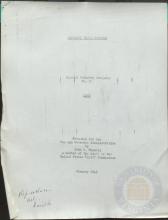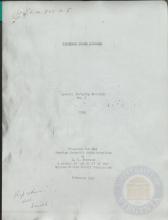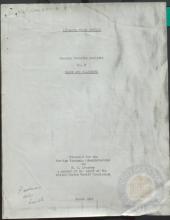Doc. No. 260 Summary
Description:
Defense document number 260 - Map of Distribution of Japanese in Manchuria, 1928 exhibit description. For use in the Manchurian phase. Notation at the top of the page states "withdrawn - to be introduced later." Bottom part of the page has a handwritten note: "Check page 29, Lytton Rep't." Summary of document states: "It could be pointed out that though the total Japanese population of Manchuria in 1928 is only given as 206,203, the 101,000 Japanese living in Kwantung Leased Territory were actually under Japanese rule and another 88,000 in the SMR zone were under Japanese military protection. Hence the bona fide Japanese settlers at this time numbered only about 16,000 persons."










